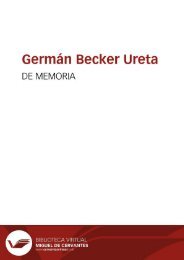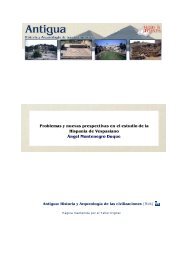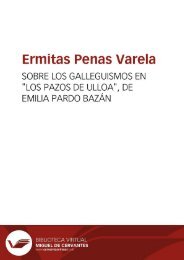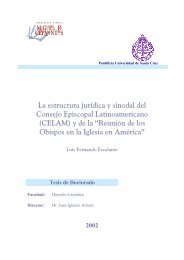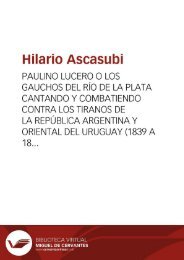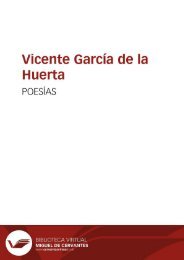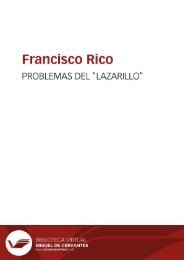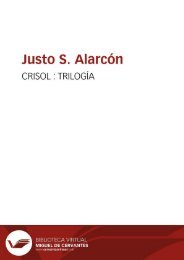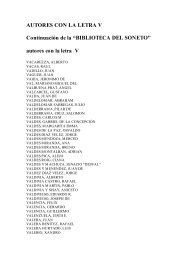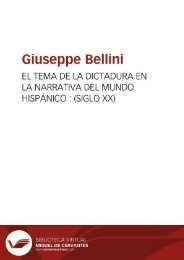Create successful ePaper yourself
Turn your PDF publications into a flip-book with our unique Google optimized e-Paper software.
Anales galdosianos [Publicaciones periódicas]. Año XII, 1977<br />
concentrates on the important theme of illusion and reality, rightly emphasising, in the process,<br />
the subtle ambiguities inherent in <strong>Galdós</strong>' approach to madness which earlier critics have tended to<br />
overlook. Cervantes, rather than Zola, is seen as the major influence here. Durand is particularly<br />
effective in his analysis of the parallels between Isidora's psychological shortcomings and the<br />
mental and moral deficiencies of the Madrid society portrayed by <strong>Galdós</strong> in the novel. Here<br />
Cervantine ambiguity and heredity come together to reinforce, through the medium of irony, <strong>Galdós</strong>'<br />
social critique, for the heredity which unites Rufete and Isidora in a common madness also unites<br />
symbolically Leganés and Madrid. Despite the suggestion, made repeatedly in the description of<br />
Leganés in chapter 1 and rendered with graphic panache in the Canencia episode, that the bordeline<br />
between madness and sanity is not as easy to draw as might be thought, throughout the first part of<br />
the novel Leganés and Madrid remain fundamentally antithetical worlds the respective, and largely<br />
separate, domains of the manifestly mad Rufete and of Isidora, apparently so normal that she not<br />
only shares, but positively embodies, the values and aspirations of the society in which she lives. Not<br />
until the «canon's» letter at the end of Part I ends the suspense which has been carefully maintained<br />
with regard to the validity or otherwise of Isidora's pretensions -and in doing so recalls to mind<br />
the half-forgotten spectre of Rufete's madness- is the real underlying similarity between Isidora, the<br />
«canon» and Rufete finally and fully grasped. With the arrival of this letter, reality, in the shape of<br />
the hereditary bond linking these three in a common, and now manifest, « neurosis », delivers an<br />
ironic commentary on previous appearances, puncturing the apparent normality of Isidora and, by<br />
extension, that of the whole society with which she is identified. With Isidora thus tarred with the<br />
brush of Rufete's madness, the wall separating the apparently antithetical worlds of Leganés (insanity)<br />
and Madrid («normality») collapses, leaving their fundamental similarity fully revealed.<br />
This is a good example of the way in which <strong>Galdós</strong> adapts the naturalistic theory of the degenerative<br />
family neurosis 59 to suit his own particular purposes. It is surely wrong, therefore, to dismiss such<br />
devices, as Durand does, as «mere naturalistic trappings» 60 . One of the major attractions of the<br />
theory for <strong>Galdós</strong> was clearly its protean character. By its means he is able to group within the three<br />
generations of a single family a wide variety of psychologically abnormal types without sinning<br />
greatly against verisimilitude (rather as though the major branches of the Rougon-Macquart family<br />
59 V. M. Gordon, «The Medical Background to <strong>Galdós</strong>' La desheredada », Anales Galdosianos , VII<br />
(1972), 67-76.<br />
60 Art. cit., p. 193.<br />
39



